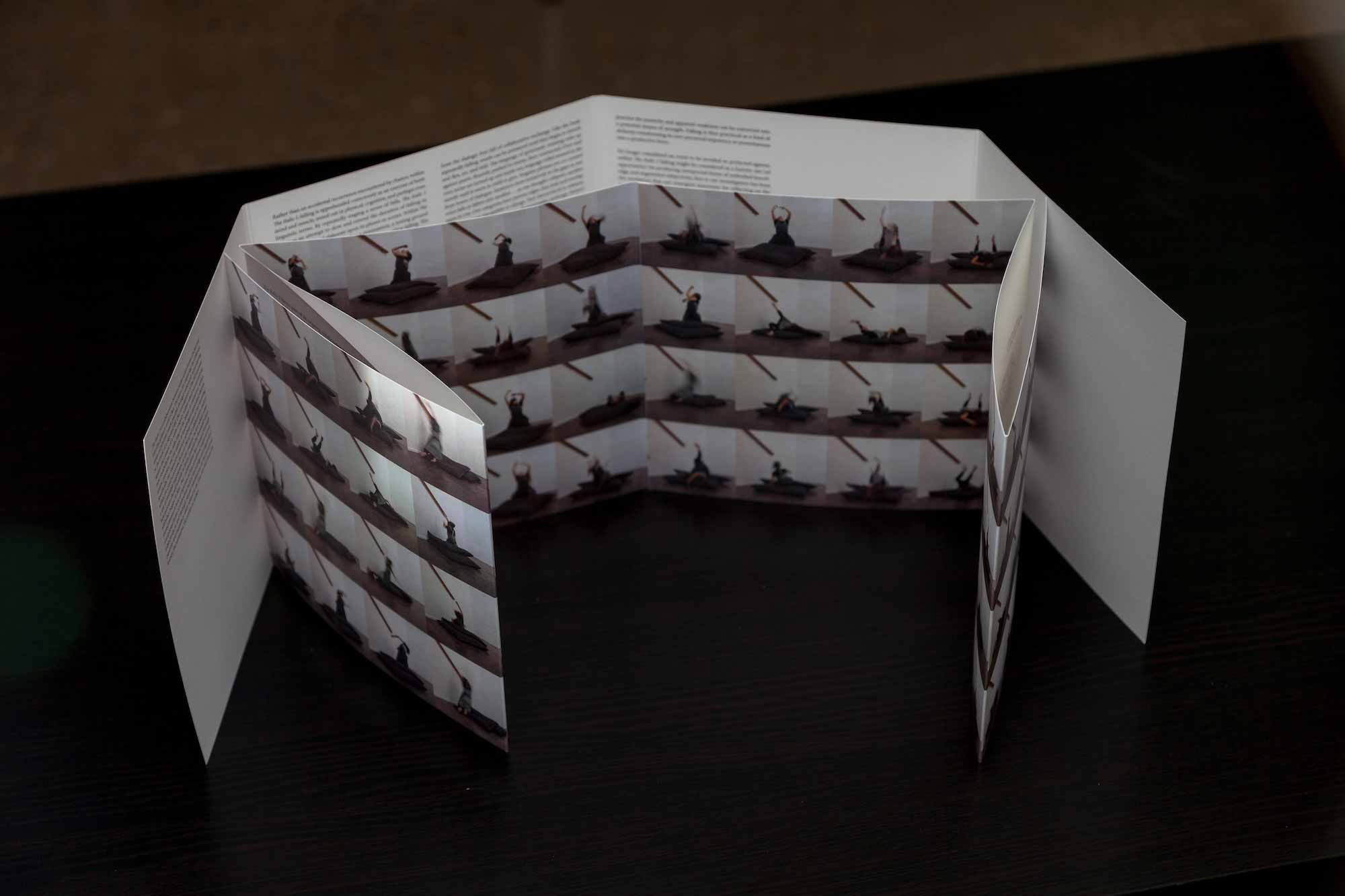
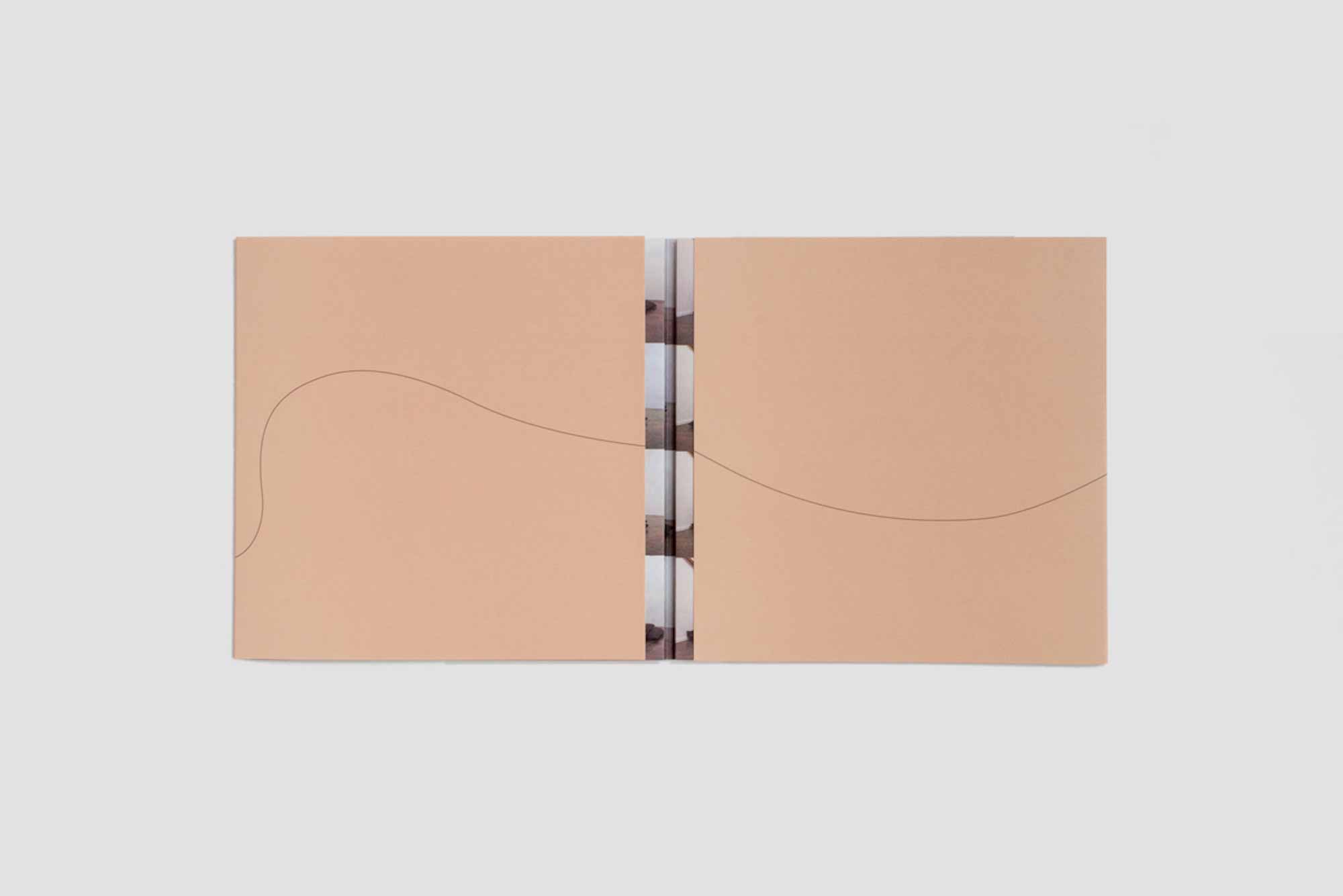
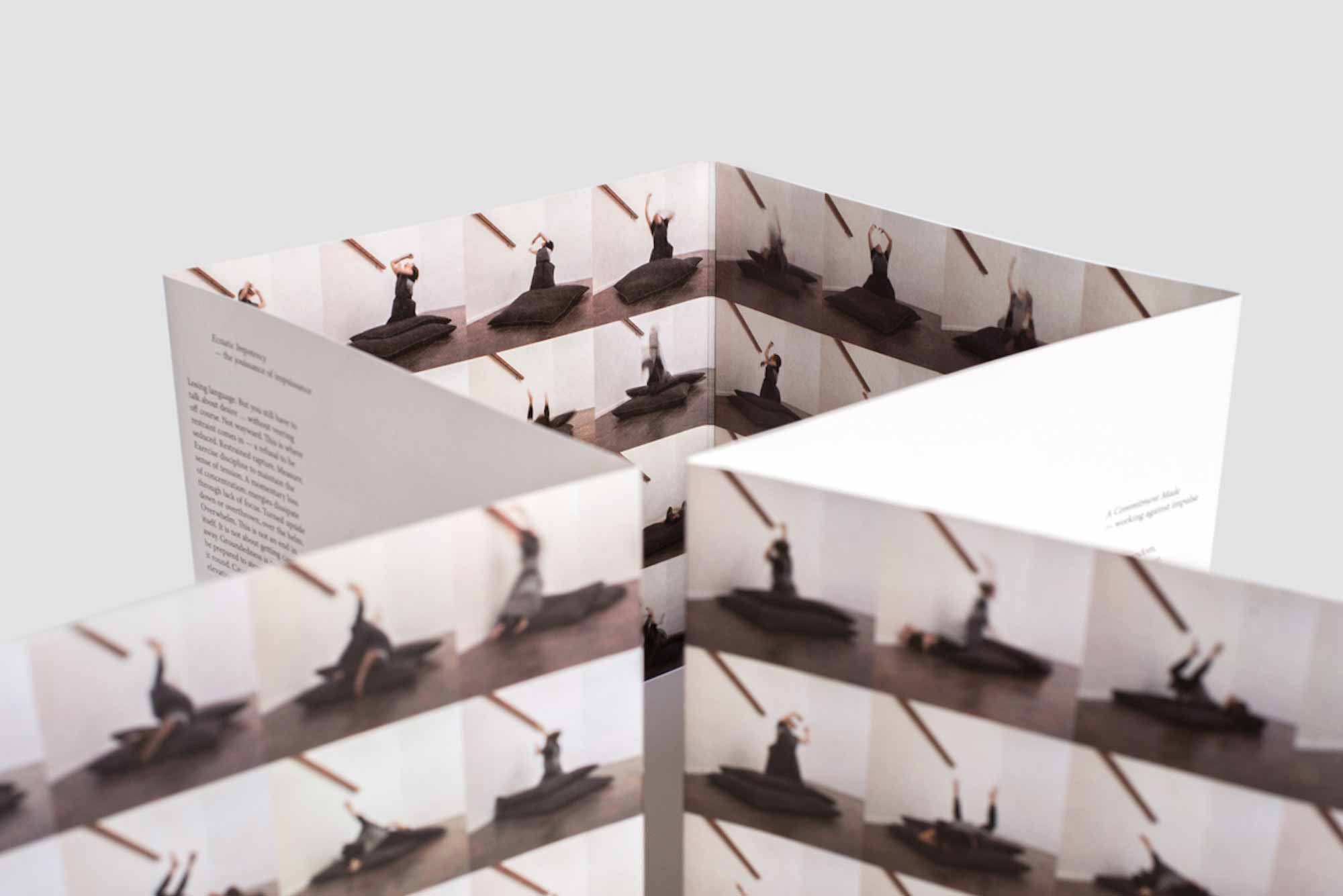
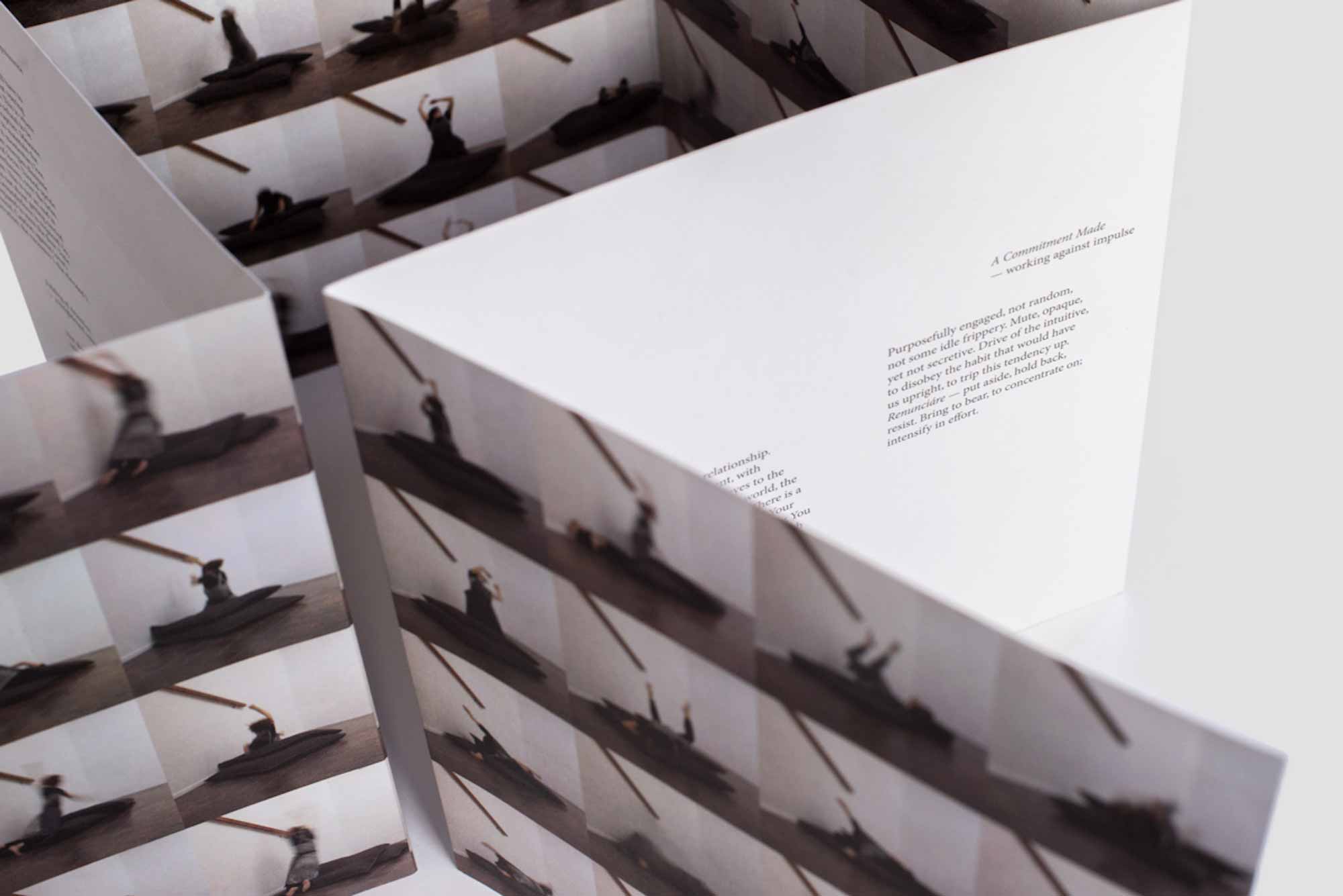
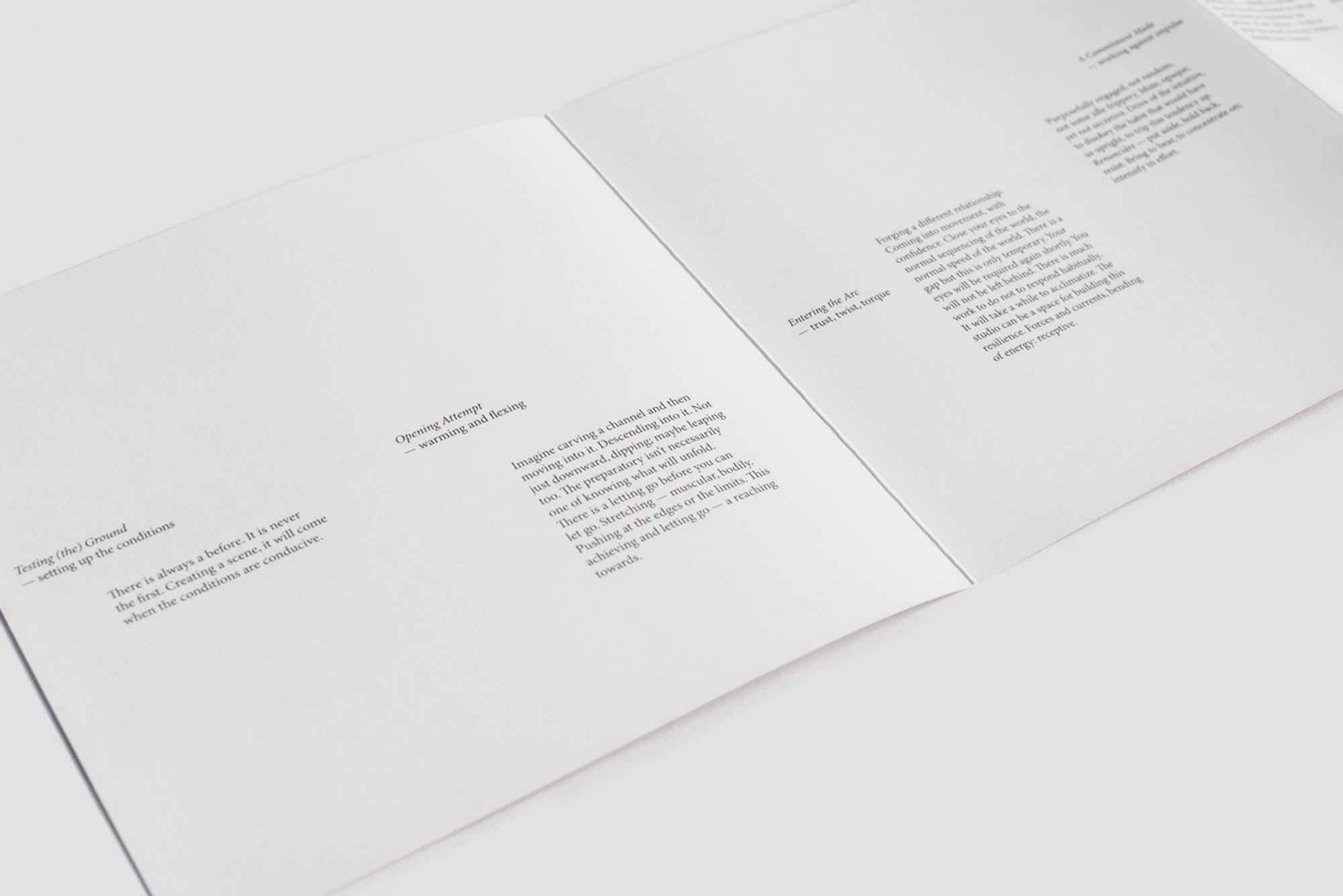
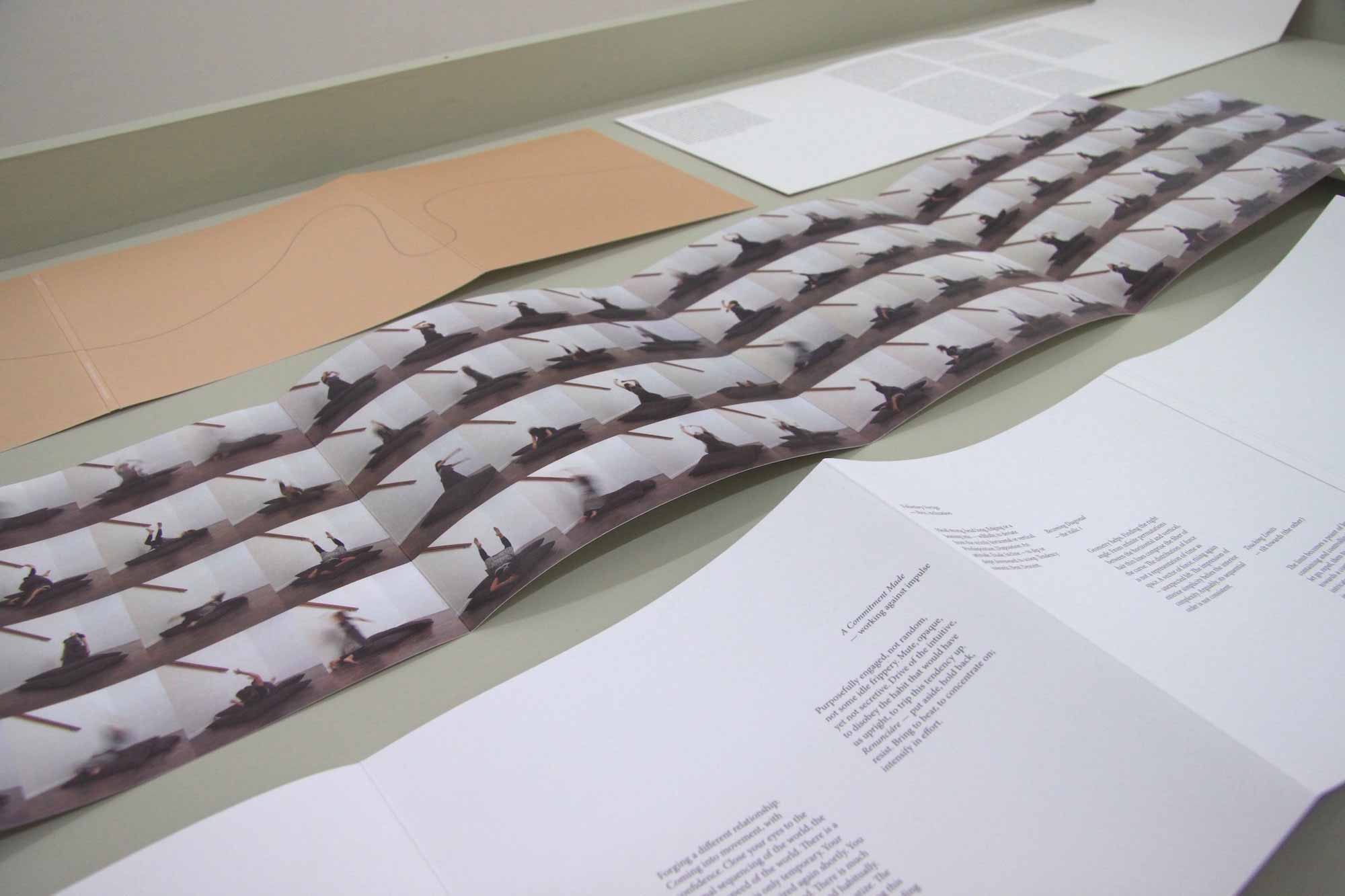
Not disorientation but a shift in orientation. Going inward — turned backward. Inversion — to turn, change; turn inside out, to fold. Turn around on an axis; revolve — from volvere, to roll or wind. Turn over, rolling on the tongue; the release of language from itself. [Cocker/Thornton, The Italic I]
The Italic I is a collaborative project (2014 — 2019) by writer-artist Emma Cocker and artist Clare Thornton that explores the different states of potential activated by purposefully surrendering to the event of a repeated fall. Within The Italic I the act of falling is slowed and extended through the use of both lens and language, as a means for attending to its different phases or ‘scenes’. The motif of falling becomes the foil for reflecting on the undisclosed, unnamed, or even invisible episodes within artistic endeavour, the various tipping points between thinking and action. The Italic I publication marks the culmination of a performative-poetic enquiry comprising photographic performance-documents presented alongside a textual lexicon generated in the ‘free-fall’ of conversational exchange. Together in conversation Cocker and Thornton practise linguistic falls, searching for a language adequate to the task of articulating the experience of falling through falling. They ask: How can we develop a mode of linguistic expression — an alternative poetic-textual document — that embodies rather than describes the live experience that it seeks to articulate? Akin to the body repeatedly falling, language can be generated from within fall-like circumstances, words pressured until they begin to arc and fold. This method of ‘conversation-as-material’ — a practice of ‘writing-without-writing’ developed by Cocker over a series of artistic collaborations — takes conversation itself as the live site for an immanent, inter-subjective emergence of language, a kairotic language borne of the opportune moment. It involves the quest for a not-yet-known vocabulary emerging synchronous to the situation, the site-specificity, that it seeks to articulate, formed through the co-production of a language rolled around in the mouth until it starts to yield or give. Here, meaning does not exist prior to the event of utterance, but rather it is discovered (often retrospectively) through a dialogic process, through the transcription and distillation of recorded conversation towards an emergent poetics.
Emma Cocker is a writer-artist and Associate Professor in Fine Art at Nottingham Trent University. Operating under the title Not Yet There, Cocker’s research focuses on the process of artistic exploration and the performing of ‘thinking-in-action’ emerging therein; on models of (art) practice and subjectivity that resist the pressure of a single, stable position by remaining wilfully unresolved. Her mode of working unfolds restlessly along the threshold between writing/art, including experimental, performative and collaborative approaches to producing texts parallel to and as art practice. Cocker’s recent writing has been published in Failure, (2010); Stillness in a Mobile World, (2010); Drawing a Hypothesis: Figures of Thought, (2011); Hyperdrawing: Beyond the Lines of Contemporary Art, (2012); Reading/Feeling (Affect), (2013); On Not Knowing: How Artists Think, (2013); Choreo-graphic Figures: Deviations from the Line, (2017); The Creative Critic: Writing as/about Practice, (2018), and as a solo collection entitled The Yes of the No, (2016).
Clare Thornton (1970 — 2019) was an interdisciplinary maker working with performance, sculpture, installation & print. In 2007 she co-founded The Performance Re-enactment Society for investigating the problems and potential of performance and its documents, with projects shown at Arnolfini, Spike Island, Flattime House/South London Gallery and Gagosian Gallery NY. Thornton has shown her work extensively nationally and internationally (both as solo projects and collaborations) in Scandinavia, Latvia, Turkey, Australia, USA. Recent exhibition and bookwork projects include: Materials of Resistance, Plymouth Arts Centre, (2017); The Dandy and Mute, Oriel Myrddin, Carmarthen, Wales (2014); Corridors, Stairways & Corners, Arnolfini, Bristol (2013); A Lexicon of Labour Movements, KWMC with The Showroom Projects, Bristol, (2013.) http://clarethornton.com
The Italic I has been published and exhibited in different contexts including in Drain: A Journal of Contemporary Art and Culture, on Athleticism, (2015); Fall Narratives: Interdisciplinary Perspectives (2016); the Journal of Theatre, Dance and Performance Training, Special Issue on Showing and Writing Training, (2016); Studies in Theatre and Performance, Special Issue on The Alternative Document, (2018); and The Creative Critic: Writing as/about Practice, (2018).
Emma Cocker’s practice is shaped by an interdisciplinary, hybridised approach, operating restlessly along the threshold of writing/art, including experimental, performative and collaborative approaches to producing ‘texts’ parallel to and as artistic practice. She asks: How do we read / write / converse as artistic researchers? Against utility, against informational acquisition: what other critical-poetic practices might we cultivate; what different kinds of sense making become generated therein? How does the ‘how’ of reading / writing / conversing – the very act, event or process itself – organise us and shape our understandings? How might we reorganise ourselves differently through reading / writing / conversing conceived as aesthetic practices?
Hélène Cixous, Coming to Writing and Other Essays, (Cambridge, Mass : Harvard Univ. Press, 1991).
Franco Berardi, The Uprising: On Poetry and Finance, (Semiotexte, 2012).
Michel de Certeau, The Practice of Everyday Life, (Berkeley : University of California Press, 1984).






































































